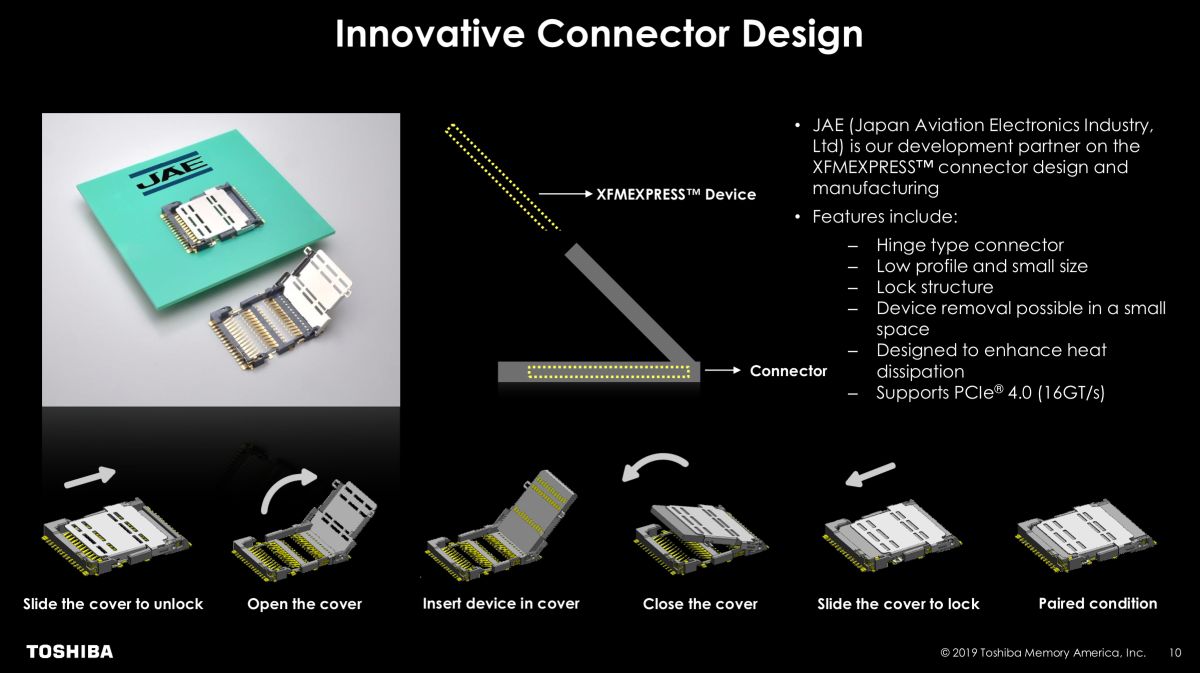For context, the standard BGA (Ball Grid Array) SSD measures in at 11.5 x 13mm with a PCIe x2 interface, while the new XFMEXPRESS is slightly larger at 18 x 14 x 1.4mm. Unlike BGA SSDs, however, Toshiba’s new form factor doesn’t need to be soldered down to a system, due to its card-shaped nature. Based on the diagram, the idea behind XFXEXPRESS is both accessibility and hot-swapping. It utilises a tool-less mechanism that seemingly incorporates the retention and socket mechanisms of both an M.2 SSD and notebook memory module. Specs-wise, Toshiba says that the XFMEXPRESS would perform on similar levels as BGA SSDs, and will support the latest PCIe 4.0 interface. However, Toshiba is also making it clear the XFMEXPRESS will not be intended to function or be used as externally-accessible slots like SD cards. PC manufacturers will still be required to open up the device housing the storage device to gain access to it.
Toshiba didn’t specify when exactly it will be bringing XFMEXPRESS to the masses, and it’s too soon to tell if this new form factor will be able to enjoy a rapid adoption by the public. Having said that, it cannot be argued that this new form factor does have its benefits if and when it becomes adopted. As pointed out by AnandTech, it brings the benefits of replaceable storage to devices that are usually limited by the BGA SSDs, eMMC, or UFS modules. Moreover, because of the size of XFMEXPRESS, this could allow OEMs and PC manufacturers to further reduce the form factor of its products. (Source: Toshiba via PCGamesN, AnandTech)
